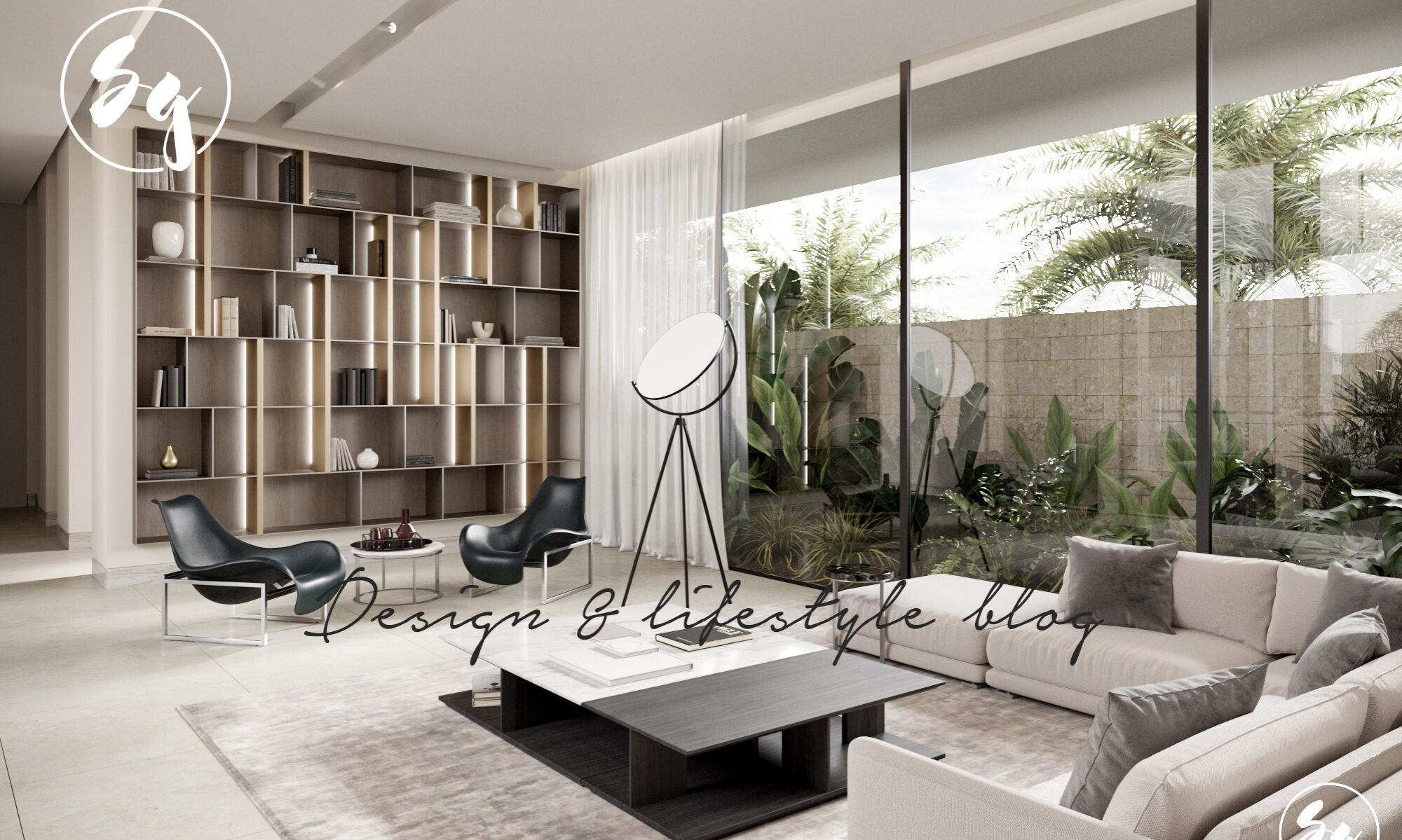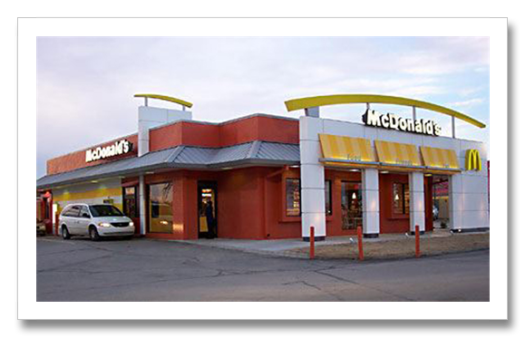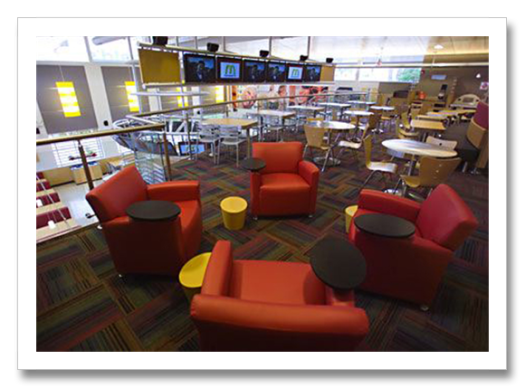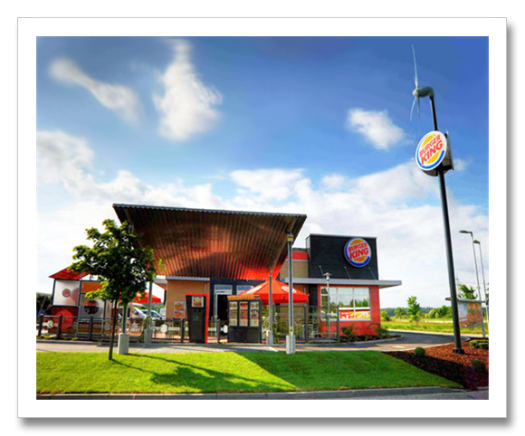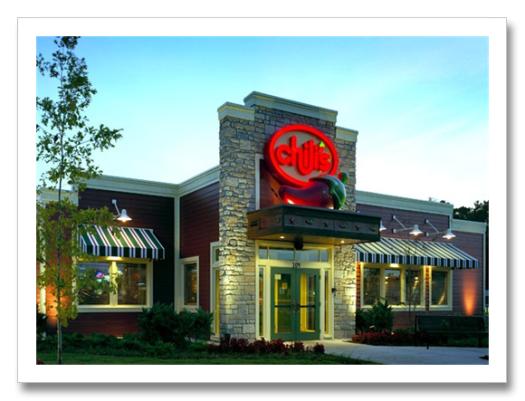McDonald’s is undergoing a process of redesign. What is more important than design itself is its study for exploring more sustainability in certain locations.The chain’s first self-proclaimed “green” restaurant, located in Chicago, is LEED Gold-certified, while a North Carolina location features Charge-Point electric vehicle charging stations. And in Brazil, Chile, and Argentina, 270 McDonald’s restaurants deliver used oil to be converted into biodiesel.The packaging however still has a long way to go. Most McDonald’s packaging is paper-based and can be composted,yet still haven’t found biodegradable materials that don’t retain heat.McDonald’s can never truly claim to be green as long as it sells meat products–the average Holstein cow produces up to 180 kilos of methane each year. Ultimately, cows produce 18% of all greenhouse gas emissions, and the meat industry is one of the leading contributors to climate change.
The new ‘design’ concept is revolving around the idea of a community center, a place for young people to hang out especially since slow food is the trend now with more attention on the eating experience itself as opposed to gulfing food down. France was the first country to have a redesigned McDonald’s. All the plastic will be replaced with clean and modern lines, wood, brick and softer lighting from modern lamps. The signature mansard roof is being replaced by a flat roof topped and a newly designed golden sloping curve. The emblematic red and yellow colors will be revamped to terra cotta, olive and sage green.All this with the aim of attracting more adults and young professionals to their customers.
There will be three major areas: a “linger” area that features comfortable armchairs and sofas and Wi-Fi connections, a bar-like area – “the grab and go zone” with Plasma TVs for the people that eat alone, and the “family zone” where families can enjoy the meals in a colorful environment with fabric cushions and flexible seating. McDonald’s began redesigning their restaurants in the UK and US. An estimate of 7,000 US restaurants will be rebuilt or modernized. The company has decided to a new three dimensions approach to their expansion: menu changes, store renovations and a new ordering experience. The design process was based on the idea that: “People eat with their eyes first. If you have a restaurant that is appealing, contemporary, and relevant both from the street and interior, the food tastes better.” – president and COO Don Thompson. Criticism already started since the cost per branch for an existing restaurant will not be less than $300,000 an amount many would rather see go to improving the quality of food than the type of chairs.Once we realize that they still have a long way to go to become “green” we can at least applaud for the effort made in that direction.
A new Burger King restaurant in Waghäusel, Germany is hooked up with wind power, solar power, and lighting, heating and cooling systems that are expected to reduce energy costs by a whopping 45 percent and slash CO2 emissions by 120 metric tons annually.The site also boasts more than 720 solar photovoltaic modules that can generate over 53,500 kWh of electricity per year, and a wind turbine that can generate about 2,500 kWh of electricity per year. The Burger King is an example of the company’s green vision, entitled Burger King 20/20, for all of its locations. No matter how much fast food restaurants try to become “eco-friendly” that doesn’t change the fact that selling unhealthy mass-produced eats, yet still their “green” efforts are very welcome and should be an example for others to follow. Source: Inhabitat , GreenBiz
Brinker, the company that owns the Chili’s and Maggiano’s Restaurant chains recently announced that they will switch all 827 of their restaurants to LEDs– saving $3.7 million dollars a year. The eateries even claim to prefer the ambiance afforded by the new lighting technology to incandescents.
Restaurants are serious energy hogs especially with the use of incandescent lighting bulbs. In terms of lighting, fluorescent lighting (known as energy saving bulbs) have that “hospital look” which is a turnoff to any restaurant owner as its ‘effect’ would throw off the ambience.Now, however, LEDs can replace incandescents with no noticeable visual difference which means we might be seeing them in a lot more eateries. The new LEDs’ light is as good or better than incandescent bulbs, is dimmable down to 20%, and uses up to 90% less energy.The only problem is the initial cost which is much higher than regular light bulbs.
The financial savings do not just come from the efficiency of the light bulb. By reducing the heat output, the buildings’ air conditioning is also reduced. An LED’s life span is counted in the tens of thousands of hours which reduces maintenance costs as well. Chili’s change out of 125,000 bulbs is the largest LED switch over to date. Perhaps the best part is that the public gets to see this great green technology in action.
Source: Inhabitat
